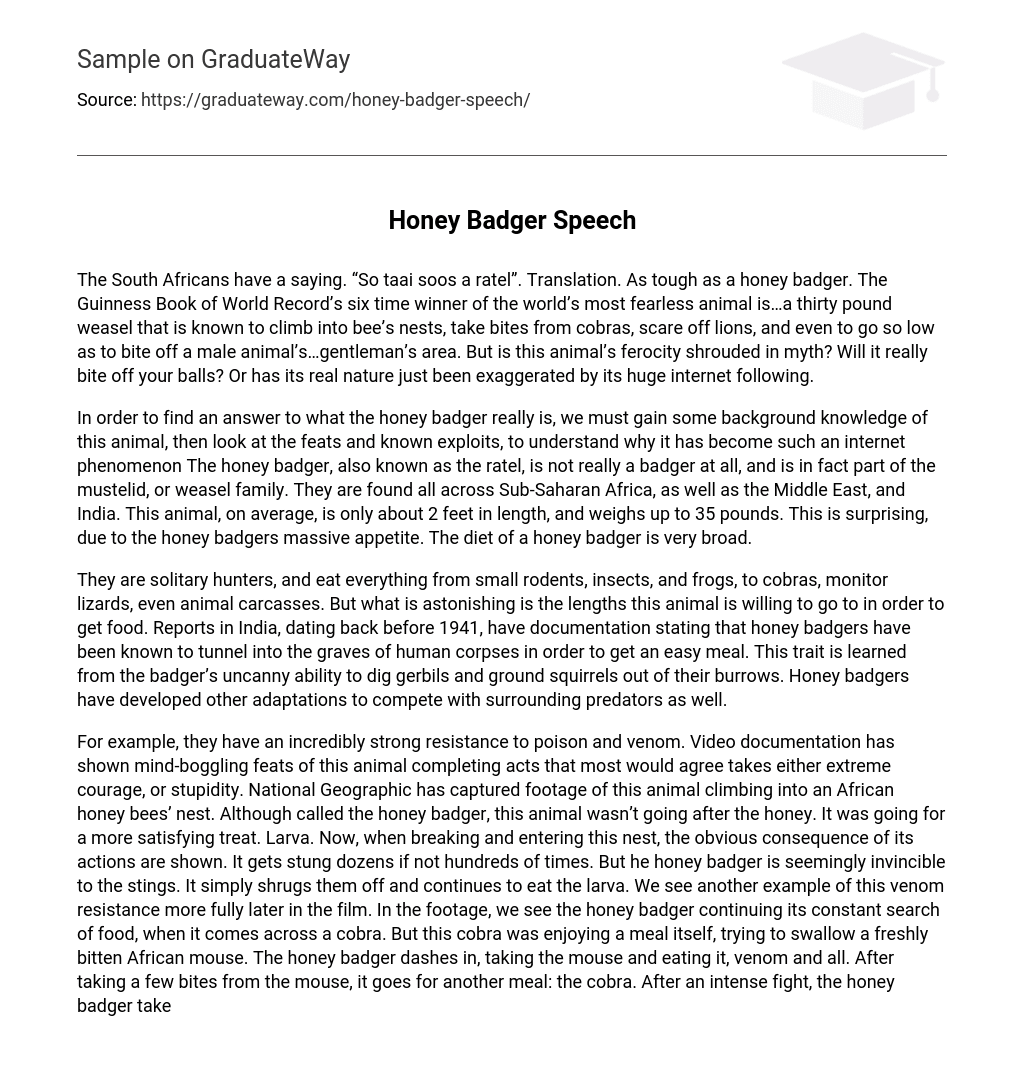The South Africans have a saying. “So taai soos a ratel”. Translation. As tough as a honey badger. The Guinness Book of World Record’s six-time winner of the world’s most fearless animal is…a thirty-pound weasel that is known to climb into bee’s nests, take bites from cobras, scare off lions, and even to go so low as to bite off a male animal’s…gentleman’s area. However, is this animal’s ferocity surrounded by myth? Will it actually bite off your balls? Or has its true nature been exaggerated by its massive online following.
In order to fully understand the honey badger’s nature, it is essential to gain some background knowledge about this creature and explore its impressive accomplishments and famous exploits. Despite being called a badger, the honey badger (also known as the ratel) does not actually belong to the badger family but instead belongs to the mustelid or weasel family. It can be found in various regions such as Sub-Saharan Africa, the Middle East, and India. Despite its relatively small size of around 2 feet long and weighing up to 35 pounds, the honey badger has an insatiable appetite and consumes a wide range of food.
The honey badger is an impressive solitary hunter that feeds on a wide variety of prey, such as small rodents, insects, frogs, cobras, monitor lizards, and animal carcasses. One remarkable aspect about the honey badger is its determination to find food. Before 1941 in India, historical records show that these animals would even dig into human graves to effortlessly obtain a meal. This behavior is a result of their exceptional digging skills which they use to extract gerbils and ground squirrels from burrows. In addition to their digging prowess, honey badgers have also developed other adaptations to effectively compete with local predators.
The honey badger exhibits remarkable resistance to poison and venom, as seen in videos capturing its fearless acts. National Geographic documented a case where the honey badger bravely entered an African honey bee nest in search of larva. Despite being stung multiple times, the honey badger remains unaffected by the stings, continuing to feast on the larva. In another instance, it encounters a cobra that had just bitten an African mouse. Undeterred by the venom, the honey badger swiftly devours both the mouse and the cobra. After a fierce battle, it emerges victorious and bites into its well-deserved spoils.
Despite its small size, the honey badger possesses enough venom to kill an animal three times larger than itself. It may lose consciousness from the venom while halfway through a meal, only to wake up minutes later and resume eating. Despite these remarkable abilities, there is still some uncertainty about the honey badger’s capacity to fend off lions and whether it truly deserves the title of being the “Mike Tyson” of the animal kingdom.
While browsing the internet, I discovered various unrelated websites that all mention how honey badgers have a peculiar habit of biting off animals’ testicles. This random piece of knowledge has gained widespread attention, with even popular television shows like Top Gear referencing it. However, there is no actual evidence supporting this claim. In fact, it is well-known that lions and other large predators often hunt and consume honey badgers. Although it’s worth mentioning that honey badgers can easily startle and escape from lions.
Their fearless nature has made them an internet sensation, with numerous videos showcasing their incredible feats available on YouTube.
Two videos, titled “Honey badger vs Cobra” and “The Crazy Nastyass Honey Badger,” have gained immense popularity, each accumulating approximately 4 million views. These videos were featured on the homepage of yahoo.com, attracting significant attention. The video “The Crazy Nastyass Honey Badger” particularly sparked the famous internet phrase: “Honey Badger don’t care.” This catchphrase has even resulted in the sale of merchandise online, such as T-shirts and mouse pads. Currently, this small creature is enjoying its moment in the spotlight. Whether it will be regarded as a cultural symbol or merely a passing trend remains uncertain; however, its remarkable presence in the animal kingdom cannot be denied.





